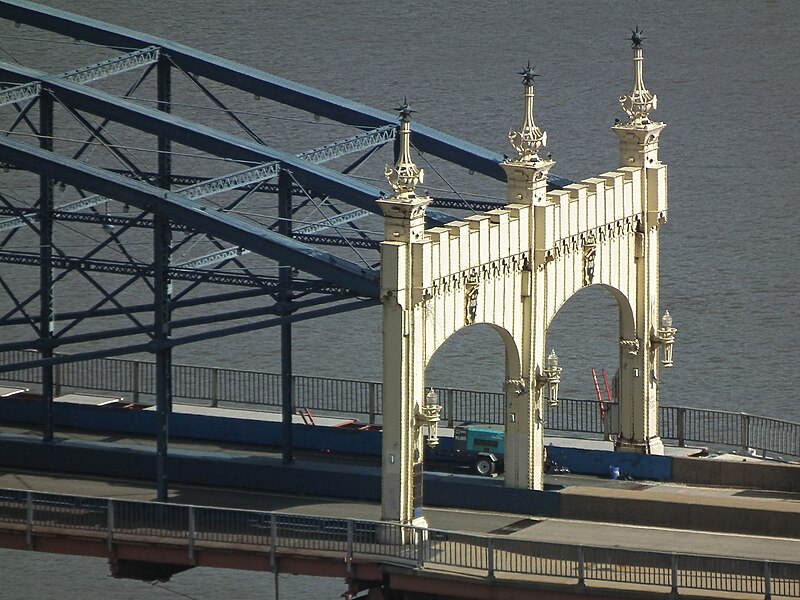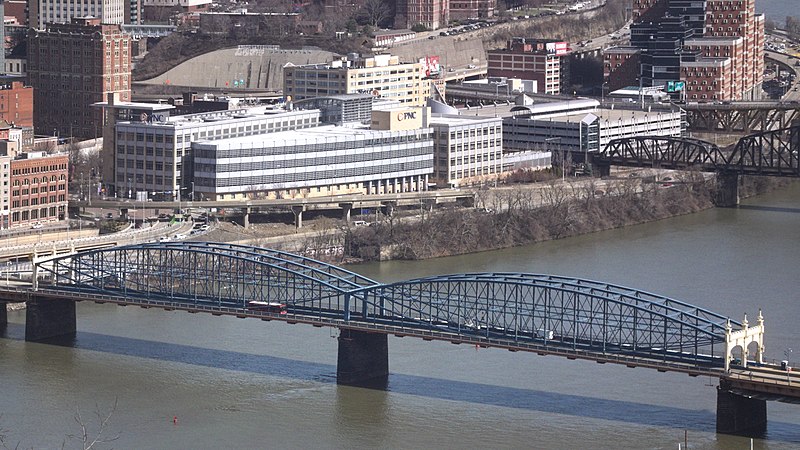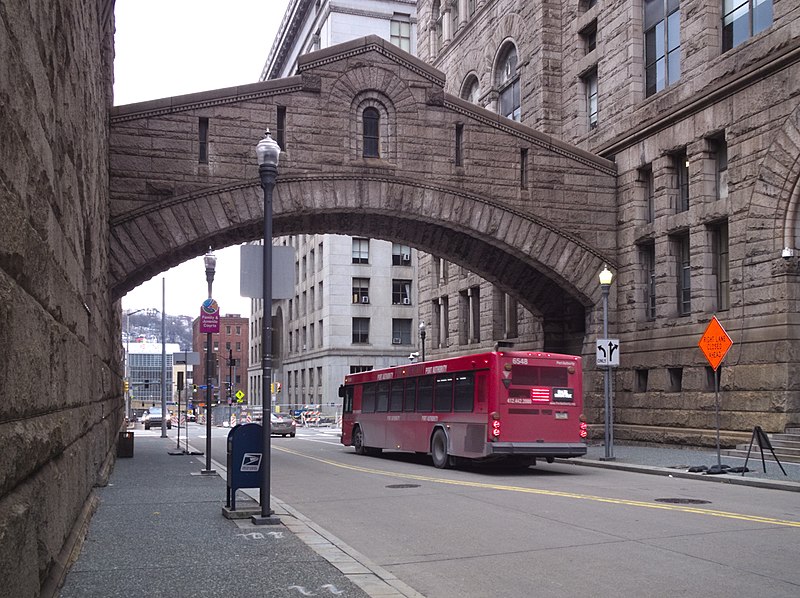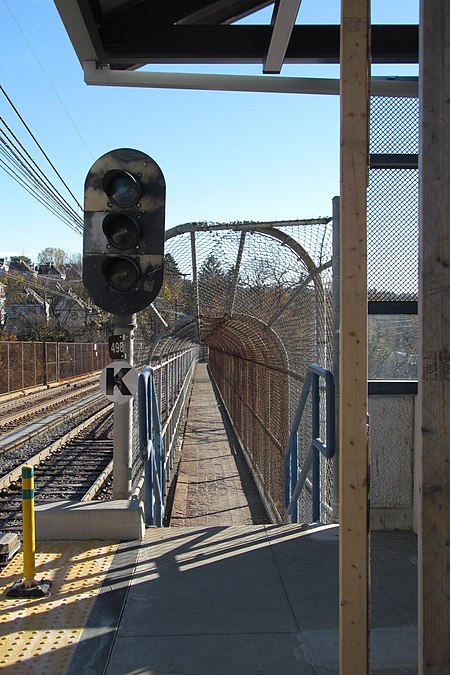
The South Tenth Street Bridge, seen from the Bluff.

The current portals are not original; they were built when the upstream span was widened in 1915. The original bridge was designed by Gustav Lindenthal; the current portals were designed by Stanley L. Roush, who was responsible for many prominent transportation-related projects, including the entrances to the Liberty Tubes and Armstrong Tunnel and the terminal at the Allegheny County Airport.
The bridge is the oldest through-truss bridge in the United States, and one of very few with a Pauli or lenticular truss. The piers are even older; they were reused from the previous bridge, designed by John Roebling after the Great Fire of 1845 destroyed the old wooden covered bridge that had been put up in 1818.


The Wabash Bridge had a lot of bad luck. It was built from 1902 to 1904; when it was almost finished, it collapsed, killing ten workers. When it opened, it served Jay Gould’s spectacularly expensive Wabash Railroad, which went bankrupt in four years. The gorgeously ornate Wabash Terminal downtown continued to serve passengers until 1931, when the last passenger train rolled out, and it became a gorgeously ornate freighthouse. In 1946, the Wabash Terminal and the aerial railyard that served it burned, leaving the Wabash Bridge entirely useless. It was torn down in 1948, with the steel melted down and reused in the Mansfield Bridge between McKeesport and Dravosburg.
But the two stone piers that supported the bridge were left, and they are still here today. Occasionally they make good platforms for flags during the Regatta or some such festival. Otherwise, they just stand there. There have occasionally been proposals to put a new bridge on them to connect the Wabash Tunnel with downtown again, most famously for the planned Skybus transit system that almost but not quite happened in the 1970s. But nothing comes of them, and probably nothing will come of them unless some very expensive reconfigurations are done at the south end of the tunnel to connect it with something more useful than Woodruff Street.

This tiny one-lane Timberland Avenue bridge over Saw Mill Run closed in about 2014, isolating two houses that had probably already been abandoned. The green one further back dates from the 1880s, the other one from the 1890s. There was once a group of about half a dozen houses here; these are the last remnants, and they will be either torn down or eaten by jungle eventually. It will become another vanished village along Saw Mill Run, like Seldom Seen, and almost no one will remember that there was a tiny country hamlet here in what is now the middle of the city near the south end of the Liberty Tubes.

This little bridge isn’t much to look at, but it certainly dates from before 1909.
What caused the houses to be abandoned? Probably the same thing that caused them to be built in the first place: their proximity to Saw Mill Run. In southwestern Pennsylvania, minor rivers like this one are subject to flash floods once in a while that might have reached some of the houses here, and certainly would have isolated them if the bridge was under water. Perhaps a worse problem was that, as the South Hills developed farther upstream, Saw Mill Run became something like an open sewer, known for its pollution and noxious stench. Both floods and pollution made houses along the run undesirable. There is much less pollution now, but it is not likely that this property will become valuable enough to make it worthwhile rebuilding the bridge.
On planning maps, these houses are in Bon Air, but right on the border with Brookline. The Brookline Connection site has some information about Timberland Avenue. The first picture in that article shows these two houses as they appeared in 1909, and the second shows this bridge.

The Bridge of Sighs connected the Allegheny County Courthouse with the jail across Ross Street. Now it connects the bureaucracy in the courthouse with more bureaucracy in the repurposed jail building, so that the name is just as appropriate. In the picture above, for a bit of a change of pace, old Pa Pitt gives you a bus driving away from you, which gives us a good sense of scale.



The architectural parts of the Sixteenth Street or David McCullough Bridge, built in 1923, were designed by Warren and Wetmore, architects of Grand Central Station in New York. The fact that the bridge does not fall down is attributable to the engineer, H. G. Balcom.


The Fallowfield station on the Red Line in Beechview is a kind of parasite on the Fallowfield viaduct. The Fallowfield Avenue end is at street level; the other end of the station is about five storeys above street level. Stations on the Red Line are currently getting a little bit of renovation.

The Fallowfield viaduct is one of three major viaducts, along with a bridge and a tunnel, that are necessary to bring the streetcars from downtown into central Beechview.

The viaduct is as important to pedestrians as it is to streetcars—so important, in fact, that, when the walkway was closed for repairs for a while a few years ago, the Port Authority gave free rides between Fallowfield and Westfield at the other end of the viaduct.

Outbound streetcars approach the viaduct from a curve.